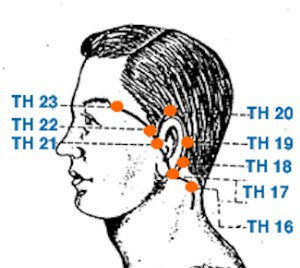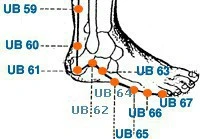Bloodletting Found Effective For Migraines - no not "that" bloodletting...

People suffering with migraines may do just about anything to be rid of them. What about bloodletting?
While bloodletting sounds straight out of the middle ages, it is actually a fairly mild technique used within acupuncture for a range of conditions. Our theory site has a general introduction to bloodletting section for those wanting to look a bit deeper. While there are many uses and potential areas, it tends to be used on what are known as the Jing well points. Jing well points are located near the tips of the fingers and toes and are the beginning or ending of each meridian, usually next to the top of the nailbed. The technique uses a small lancet, such as those used by those with diabetes to check their blood sugar, and in most cases a small number of drops of blood are released. The technique is largely painless and uneventful, certainly compared to what people think might be involved.
A team of researchers from the Beijing University of Chinese Medicine recently conducted a study comparing the effects of acupuncture treatment coupled with bloodletting versus the same acupuncture treatment without and the effect on migraines. They divided patients with migraines into two groups and used the following treatment points:
- Base Acupuncture Points (both groups)
- TH 23 - commonly used for headaches originating from liver wind or liver fire in TCM diagnostic terms.
- GB 8 - used with migraines and/or headaches, particularly with digestive involvement.
- Taiyang (EX-HN 5) - a "extra point" commonly used with one sided migraines/headaches and associated visual disturbances.
- GB 20 - a range of head and neck issues including headaches, often (but not limited to) those arising from the common cold.
- LI 4 - headaches, facial pain, sinus issues, often in combination with other points based on the individual.
- LV 3 - descends "energy" from the head, useful for headaches, eye issues; works well in the right cases with LI 4 creating what is known as the "four gates".
- GB 41 - name means "foot overlooking tears" which gives indication towards usage with a range of vision issues, also for migraines/headaches.
- GB 34 - has a wide range of usages including tendon related issues nearly anywhere in the body, a role with digestive issues, particularly liver/gb issues.
- TH 5 - headaches from colds and/or originating from the neck primarily.
- Bloodletting Points (only the observation group)
- ST 45 - release heat and stagnation from opposite end of the stomach channel - headaches, facial pain, sore throat, etc.
 UB 67 - release heat and stagnation from opposite end of the bladder channel - headaches, eye pain, sinus issues, etc.
UB 67 - release heat and stagnation from opposite end of the bladder channel - headaches, eye pain, sinus issues, etc.- GB 44 - similar with the gallbladder channel - headaches, eye pain, etc., as well as issues such as insomnia.
Each participant was given a treatment lasting 30 minutes daily for 5 days, a couple days off, and then 5 more days. Participants were evaluated throughout and after treatment using the visual analogue scale or "VAS". Both groups noticed improvement but within the bloodletting group there was a noticeable increase in reduction of symptoms. The researchers concluded that "bloodletting acupuncture at jing-well points along three-yang meridians of foot combined with routine acupuncture and simple routine acupuncture have analgesic effect, and the combined therapy is superior to simple routine acupuncture".
Now these types of generic treatment protocols will generally limit results because treatment is ideally tailored directly to each individual. That said, these points were a good choice for a study like this and "liver system" related headaches in TCM terms are arguably quite common. All things considered the study leaves room for thought as many practitioners, particularly in certain sub-systems of acupuncture, may not utilize bloodletting very often if at all.
tag @yinyanghouse for questions/comments